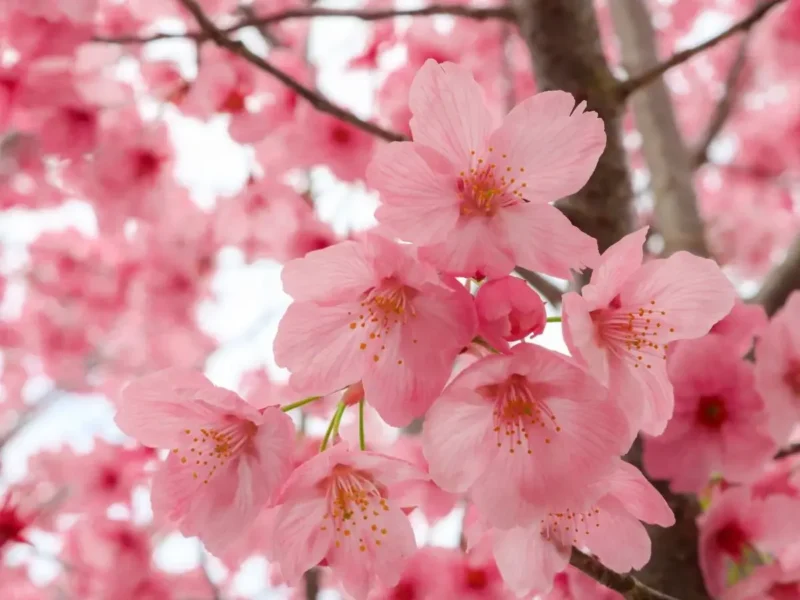Tree blossom is an evocative indication that spring has arrived. But what is blossom and what is its purpose?
Once the Northern Hemisphere reaches the spring equinox, the days get longer and the temperatures get warmer. Deciduous trees slowly wake up from their winter dormancy, open their buds, and start to flower, blossom or produce new leaves.
While many trees flower, blossom generally refers to the profusion of flowers in spring of stone fruit trees and some other plants including plums, cherries, apples and hawthorns.
For trees to blossom at certain times, the temperatures need to have consistently been cold enough for a set amount of days. This needs to be followed with consecutive warmer days for the tree to return to converting carbon dioxide into sugars and energy during photosynthesis. Predicting when trees will blossom is becoming increasingly difficult as climate change can confuse the seasons. Typically, the white blossoms of blackthorn, cherry plum, and pear appear in February and March. This is followed by the white, cream and pink blossoms of crab apple, bird cherry, wild cherry and hawthorn in April and May, with rowan and domestic apple with white, cream and pink blossoms in June.
The flowers of fruiting trees tend to be showy, colourful and scented to attract the insects they rely on for pollination. Blossoms provide pollen to pollinators such as bees and initiate cross-pollination necessary for the trees to reproduce by producing fruit.
Spring has sprung
In Yorkshire, the blossom and leaves are bursting into life. It finally feels like spring has sprung and watching the trees burst into their spectacular billowing froth of soft white and pastel colours is fascinating. The blossom of each tree will last around two weeks. As the blossom gently falls to the ground, it is just as spectacular as a carpet of ‘confetti’ that will eventually nourish the soil below.
Observing and use of blossom
Blossom has a history of herbal use across the globe. In ancient Greek medicine, plum blossoms were used to treat bleeding gums, mouth ulcers and loose teeth. Blossom extracts in the form of herbal teas are used for their alleged health benefits.
The National Trust’s Blossom Watch campaign started in March 2020 during the first Covid-19 national lockdown in England, to encourage the celebration of natural events such as the arrival of spring. The campaign also drew on the traditional Japanese custom of hanami, where people communally enjoy the transient nature of cherry blossom.
Watching blossoms develop is a reminder of the joy of observing the changing seasons and the importance of providing plants with seasonal interest in development proposals so that we can immerse ourselves in colourful blooms.







